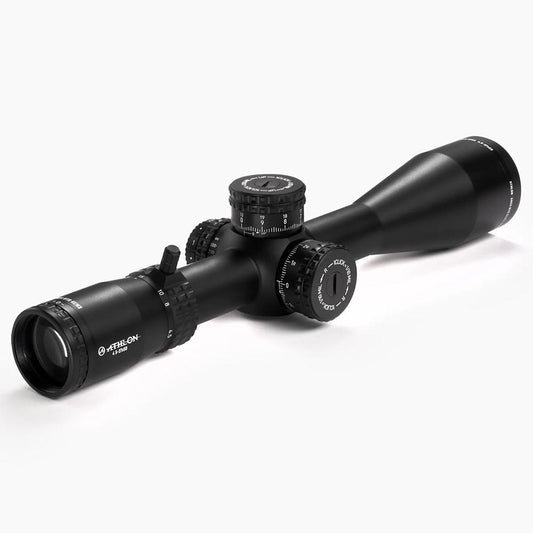

Athlon Ares BTR Gen 3 HD Rifle Scope 4.5-27x50 30mm FFP APLR13 MIL Illum. Black features a first focal plane design, allowing for accurate reticle subtensions at any magnification level. The high-definition optical system provides exceptional clarity and brightness, enhancing your target acquisition across various lighting conditions. With a robust one-piece aircraft-grade aluminum body, this scope is built to withstand the rigors of outdoor use, ensuring reliability in the field.
This riflescope includes larger stainless steel turrets that offer tactile feedback for precise adjustments, enabling quick and accurate dialing when it matters most. The illuminated reticle enhances visibility in low-light situations, making it ideal for dawn and dusk shooting. Whether you're at the range or on a hunt, the Athlon Ares BTR Gen 3 delivers consistent performance and durability, elevating your shooting experience.
Features:
- HD GLASS for superior image quality that enhances clarity and brightness in all lighting conditions.
- LARGER STAINLESS STEEL TURRET for sharper, more tactile clicks, ensuring precise adjustments.
- ONE-PIECE AIRCRAFT-GRADE ALUMINUM BODY provides exceptional durability and strength, perfect for rugged use.
- WIDE MAGNIFICATION RANGE (4.5-27x) allows versatility for various shooting applications.
- ZERO STOP SYSTEM ensures quick and easy return to your preset zero position for seamless shooting.
- ILLUMINATED RETICLE enhances visibility in low light, ideal for early morning or late evening hunts.
- PRECISION TRACKING guarantees accuracy shot after shot, making it ideal for competitive shooting.
- FULLY MULTI-COATED LENSES reduce glare and improve light transmission, ensuring a bright sight picture.
Technical Specifications Table
| Specifications | Details |
|---|---|
| Magnification | 4.5-27x |
| Lens Diameter | 50 mm |
| Tube Diameter | 30 mm |
| Weight | 30 oz |
| Length | 15.4 inches |
| Material | Aircraft-grade aluminum |
What’s in the Box?
- Lens covers
- Padded carrying case
- Neck strap
- User manual
Customer Reviews
“The clarity of this scope is fantastic! It really shines during low-light conditions.”
“I love the new turret design. Adjustments feel precise and are easy to make.”
“This scope has made my shooting so much more enjoyable. Highly recommend it!”
FAQ
How does the Ares BTR Gen 3 perform in low light? The illuminated reticle provides excellent visibility, allowing you to engage targets effectively even in dim conditions. The high-definition glass also enhances light transmission, contributing to a brighter sight picture.
What maintenance does this scope require? Regular cleaning of the lenses with a soft cloth is recommended. Ensure that the scope is stored in a dry place and avoid exposing it to extreme conditions for prolonged periods.
How does it compare with other Athlon scopes? The Ares BTR Gen 3 offers advanced features such as a wider magnification range and improved turret design compared to previous models, making it an exceptional choice for those seeking top performance.
Similar Models
Looking for the perfect riflescope? Discover our extensive Athlon lineup, including the Athlon Midas TAC for precision long-range shooting and the Athlon Argos BTR, which offers outstanding value for those on a budget. Explore our full collection for exceptional optics tailored to your shooting adventures.
You May Also Like
Here’s some of our most similar products people are buying. Click to discover trending style.






